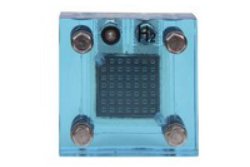New coatings for long-lasting fuel cells
In the push to develop alternative energy forms, proton exchange membrane fuel cells (PEMFCs) based on hydrogen fuel have gained widespread interest for transport applications. A key component of PEMFCs contributing significantly to their cost and weight as well as to the stack volume is the bipolar plate. Although metal-based ones are particularly attractive, a protective coating is required to avoid corrosion and keep the interfacial contact resistance low. Bipolar plates serve to separate the fuel from oxidant gases, distribute reactant gases to the cells and deliver electron flow through the PEMFC stack. In the EU-funded project STAMPEM(opens in new window) (Stable and low cost manufactured bipolar plates for PEM fuel cells), researchers worked on improving existing and developing new coating materials made of low-cost metals for use in bipolar plates. The main target of STAMPEM was development of coatings for stainless steel-based bipolar plates that can be mass produced for less than EUR 2.5 per kilowatt of stack power rating, and at annual production volumes of 500 000 pieces. STAMPEM developed new techniques to achieve good adhesion and low contact resistance between the metal substrate of the bipolar plates and the coating. Carbon- and polymer-based coatings were produced by chemical vapour deposition and electrochemical methods. Accelerated stress tests of bipolar plates in fuel cells revealed that coatings had comparable properties to gold-coated stainless steel that serves as a reference point. STAMPEM is facilitating implementation of the European Strategic Energy Technology Plan (SET-Plan), helping to develop suitable technologies to commercialise hydrogen and fuel cell vehicles. Besides applications within the automotive industry, high-performance and long-lasting PEMFCs can also have positive implications for stationary power generation.







